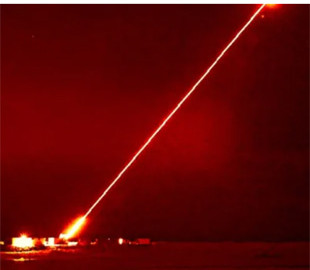
The peculiarity of the new laser device is that it will be able to function normally in bad weather, for example, in conditions of fog.
The US Department of Defense's Advanced Research Projects Agency (DARPA) has awarded a $1 million grant to scientists from Washington University in St. Louis to develop a prototype of a “quantum photon-dimer laser.” The device will use quantum entanglement to “glue” light particles together and generate a highly concentrated laser beam, writes Live Science.
Conventional lasers work when electrons in atoms oscillate in unison. When such electrons move from a high-energy state to a low-energy state, they emit light that is called “coherent,” meaning that it has the same wavelength and phase. When this light bounces off the mirrors inside the laser device, it turns into a focused laser beam. But by using entangled photons, the quantum photon dimer laser will be able to maintain precision and power over long distances and in adverse conditions, the scientists said in a statement. Thus, quantum lasers can provide better performance for military applications such as surveillance, secure communication.
Photons encode information when they enter the atmosphere, but the problem is that the photons are affected by the atmosphere and the information is lost. However, the associated photons are able to protect each other, so some information can be preserved, the researchers explained. A two-color photon dimer laser works by binding pairs of photons — fundamental particles, which are the smallest building blocks of electromagnetic radiation — through a process called quantum entanglement. Quantum entanglement — a complex phenomenon in the field of quantum mechanics that occurs when two or more particles connect to each other in such a way that one particle affects the state of the other, regardless of the distance between them.
According to scientists, when two photons are connected to each other by means of quantum entanglement, they create so-called photon dimers. These pairs of photons are easier to manipulate because they act as a unit, and any change applied to one photon directly affects the other. This binding of light particles increases the energy and stability of the laser, improving its operation over long distances and in adverse conditions such as extreme temperatures and fog.
Previous work by a team from the University of Washington showed how quantum technology can be used photon-dimer laser to improve deep brain imaging. In their research, the scientists used photonic dimers to map complex neural structures.
This technology could also play a role in quantum computing and telecommunications, possibly leading to faster and more secure ways to transmit data.

